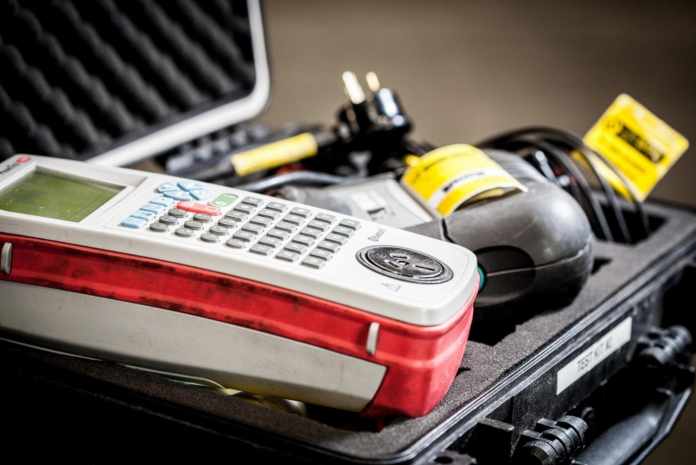Confusions About Test & Tagging in Perth WA.According to the WHS Regulation 2011, S. 150, if a person runs a business or has a workplace of any kind, it is mandatory that all electrical equipment or items that need electricity to operate within it needs to be regularly inspected and tested by a licensed professional.
The criteria for the equipment specifically are:
- If it is supplied with electricity and needs to be plugged into a socket
- If it is equipment that is exposed to normal use of electricity and is likely to get damaged due to overexposure
- Equipment that has a short lifespan and can easily seize to function
- Items that are exposed to conditions such as vibrations, heat, moisture, corrosive chemicals, or dust
Under the regulation, any environment that deals with working with electrical risks, should go through a test and tagging procedure regularly. Further information about this can also be found on their website. All of these appliances should also be tested once they have gone through a change such as a repair job or an upgrade, and especially if they have been bought second-hand.
Regarding the test and tagging, there are few things one should keep in mind, and below is some important information regarding a few things people often get confused about.
Clarification of Confusions Regarding Test and Tagging
The Legislative Requirement
This is something not many businesses or organizations are well aware of – the legislature surrounding this essential practice. Not all workplaces have one or need one, however, some are under the mandatory list and need to get their appliances tested once at least every 3 months minimum.
Unless they have high-risk equipment, which is tested more often than that. The three main industries include construction, mining, and demolition because of the harsh conditions and environments the work is done in. not just that but also because these sectors have the highest levels of external factors that could affect machinery negatively, such as corrosive chemicals, mechanical damage, heat, vibration, dust, etc.
When machinery has an unpredictable life expectancy, getting it tested to make sure it can still be used in operation is fundamental. This is also one way of avoiding lawsuits. For any company where an employee was injured by the equipment they were working with, or on, and it was not tested recently, is a painful lawsuit waiting to happen.
Managing your processing plant, factory, or warehouse wisely, is the best way to make sure everyone is happy and no one gets hurt. Negligence in the workplace can have severe consequences in some parts of Australia, and in Perth, especially regulations are taken very strictly. If you’re a business owner and not yet fully informed of what this entails, reading up on it and keeping the relevant information handy at all times is recommended. You can access the NSW legislation on the government website here, along with the AS/NZS 3760:2010: https://www.legislation.nsw.gov.au/view/html/inforce/current/sl-2017-0404#ch.3-pt.3.1 A risk assessment can always determine the safety of employees.
Test and Tagging Is Only Done by Electricians
This is also another confusion that we would like to clarify. You do not need to be an electrician by profession to do the process, however, as per the AS/NZS 3760:2010 guidelines, there is a reference to a ‘competent person’ doing the testing.
This includes anyone who has completed a course in it and received a license or certificate to ensure they have the right knowledge and skills for it. The course can take up to one day and the learners are taught how to use a Portable Appliance Tester. There are the specialized tools of the trade when inspecting electrical gear.
All Portable Appliance Testers Can Be Used
A Portable Appliance Tester is one that is used to perform the inspection, however, a point to note is that not all of them work the same. According to the experts at ETS Perth, the regulations require anything that has electronic components must get a leakage or load test done. The equipment used should be run through the PAT according to the instructions, to measure any leak or fault to the earth.
Many of the PAT testers available on the market cannot perform this function. There are several different types for instance the manual PAT testers, the PASS/FAIL testers, ones with display options, and the downloadable ones. Each one has its specific function and is used for the purpose it was built. Before purchasing one or using the one you have, making sure it is the right one for the job is essential for a successful outcome.

Testing New Equipment Is Not Necessary
Anyone would think that if they have just bought something out of the factory or store and it’s brand new out of the box, that it shouldn’t need to be tested, however, this is where the confusion or misconception comes, because this is false. Many assume that if the equipment comes with a supplier or manufacturer certified it should be safe when it was sold.
In Australia, most of the time only a visual inspection is required by many electrical stores, before they stick the tag on it. However, the right thing to do is to test everything you buy, new or used, whether it has a tag on it or not. The rule of thumb is if you haven’t tested it yourself or someone at your store hasn’t either, then you should do this before you start to use it.
Many times, some faults or damages cannot be seen with the naked eye and this is a huge hazard to the user and the employees at any company. Doing the right thing won’t cost, you a dime, get all apparatus tested, no matter if it’s small or big.
These are just a few of the many confusions or misconceptions people have around using PATs and the regulations that the testing authorities implement. Getting it right the first time will save you a lot of costs in the long run. Hire an expert to do this for you regularly to give you peace of mind.









